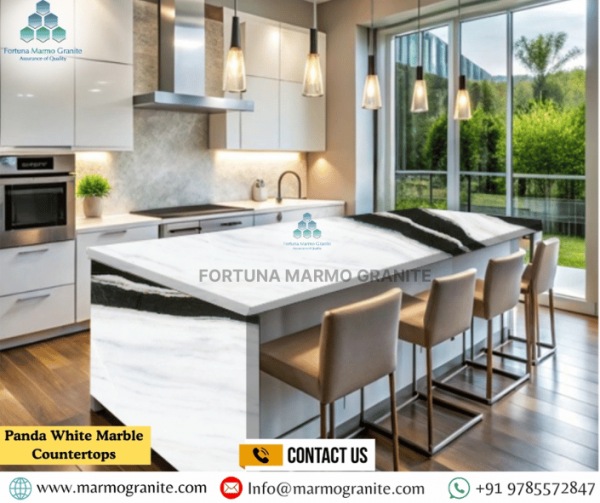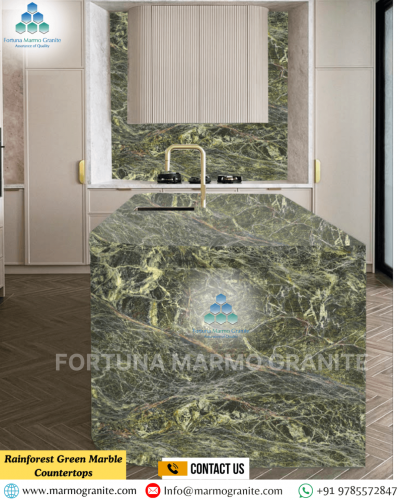Best Flooring Options to Pair with Marble Countertops
Marble countertops are a symbol of luxury and sophistication, known for their timeless beauty and elegant appearance. Whether you're renovating your kitchen, bathroom, or another space, pairing the right flooring with marble countertops can elevate the overall aesthetic of your home. The right flooring choice will complement the opulence of marble without overwhelming it. In this blog, we'll explore the best flooring options to pair with marble countertops, ensuring a cohesive, stylish, and functional design.
Why Marble Countertops are Popular
Before diving into the best flooring options, it's important to understand why marble countertops are such a coveted feature in homes. Marble is a natural stone that is prized for its unique veining patterns and luxurious appeal. It's also highly durable and heat-resistant, making it an excellent choice for kitchens and bathrooms. Marble comes in various shades, from classic white and gray to rich golds and greens, which offers a wide range of design possibilities.
However, despite its beauty and durability, marble is also a softer stone compared to granite or quartzite, which means it can be prone to scratching and staining. That said, with proper care and maintenance, marble countertops can last for decades, making them a timeless investment in your home.
Key Considerations When Choosing Flooring for Marble Countertops
- Color Coordination: Marble comes in a variety of colors and patterns. It's essential to choose flooring that complements the tones in your marble countertops. Whether your marble is white, gray, beige, or even colored, the flooring should harmonize with the overall color scheme of the space.
- Durability: While marble countertops are durable, you'll want to ensure your flooring is equally resilient. Kitchens and bathrooms often experience high foot traffic, so it's important to select a material that can withstand wear and tear without showing signs of damage.
- Style and Texture: The flooring texture should match the style and overall feel of the room. For example, if your marble countertops have a polished, glossy finish, you may want to pair them with flooring that has a similar smooth surface to maintain a cohesive aesthetic. Alternatively, if your marble has a more rustic, matte finish, you might opt for a flooring material with a textured surface.
- Maintenance: Just like marble countertops, some flooring options require more maintenance than others. Consider how much time you're willing to invest in upkeep when selecting your flooring material.
1. Polished Marble Flooring
If you love the elegance of marble countertops, why not extend that luxury to your flooring? Polished marble flooring creates a seamless and cohesive look when paired with marble countertops. It's especially ideal for larger spaces, where the floor and countertop can flow together to create an uninterrupted design.
Polished marble floors have a high-gloss finish that can reflect light, making the room feel brighter and more spacious. However, polished marble is prone to showing scratches and stains, so it's important to keep it well-maintained with regular cleaning and sealing. For those who want to maintain the same luxurious look throughout the room, choosing polished marble for both the countertops and flooring can create a refined and sophisticated space.
Pros:
- Seamless, elegant look
- Reflective surface brightens the space
- Timeless and luxurious
Cons:
- Requires regular maintenance
- More susceptible to scratches and stains
2. Wood Flooring
Wood flooring offers a warm, natural contrast to the cool, sleek appearance of marble countertops. The combination of marble and wood creates a beautiful balance of luxury and warmth, making it an excellent option for spaces where you want to evoke both sophistication and coziness.
Wood floors, particularly hardwood or engineered wood, bring texture and organic elements into a space. When paired with white or gray marble countertops, wood floors create a charming contrast that can ground the room's design. Darker woods like walnut or cherry are perfect for warmer-toned marble, while lighter woods like oak or maple can pair well with cooler, lighter marble tones.
Additionally, wood flooring provides a more comfortable and softer surface underfoot, which can be a great advantage in spaces like kitchens or bathrooms, where you may stand for extended periods.
Pros:
- Warm, inviting aesthetic
- Excellent contrast with marble
- Softer underfoot compared to stone
Cons:
- May require more maintenance (refinishing, sealing)
- Can be damaged by water or spills if not sealed properly
3. Luxury Vinyl Flooring
Luxury vinyl flooring (LVF) has come a long way in recent years and is now a highly durable and stylish option for homeowners. LVF comes in a variety of colors and patterns, including options that mimic the appearance of wood, stone, and tile. If you love the look of natural stone or wood but want a more affordable and low-maintenance option, LVF is an excellent choice.
When paired with marble countertops, luxury vinyl offers the flexibility of a wide range of design possibilities. For a modern look, you could opt for vinyl flooring that mimics the look of marble or other natural stone. For a more rustic or country-inspired design, you can pair wood-look vinyl with marble countertops for a stunning contrast.
Pros:
- Durable and scratch-resistant
- Easy to maintain and clean
- Budget-friendly
Cons:
- Can feel less authentic than natural materials
- May not add as much luxury as stone or wood
4. Porcelain or Ceramic Tile Flooring
Porcelain and ceramic tiles are both practical and stylish options for pairing with marble countertops. Both materials come in a wide variety of designs, colors, and finishes, allowing you to select a tile that complements your marble countertops.
Porcelain tiles, in particular, are known for their durability and resistance to moisture, which makes them an excellent choice for kitchens and bathrooms. The smooth surface of porcelain tile floors can mirror the elegance of marble, and you can even find porcelain tiles that imitate the look of marble, providing a seamless design without the upkeep of natural stone.
Ceramic tiles are also a great option, offering a more affordable alternative to porcelain. They come in an array of colors and patterns, so you can choose tiles that harmonize with the veining in your marble countertops.
Pros:
- Easy to maintain and clean
- Durable and moisture-resistant
- Versatile design options
Cons:
- Harder underfoot compared to other options
- Grout lines may require additional maintenance
5. Natural Stone Flooring
For a more cohesive and luxurious feel, natural stone flooring, such as granite, travertine, or limestone, can pair beautifully with marble countertops. Like marble, these materials offer a range of colors and textures, allowing you to choose flooring that complements or contrasts with your marble countertops.
Travertine and limestone, for instance, provide a softer, more rustic feel that pairs wonderfully with the sophistication of marble. These stones are durable, but they may require more maintenance than granite or porcelain.
Pros:
- Luxurious and timeless appearance
- High durability
- Variety of colors and textures
Cons:
- Requires regular maintenance (sealing, cleaning)
- Can be more expensive than other flooring options



